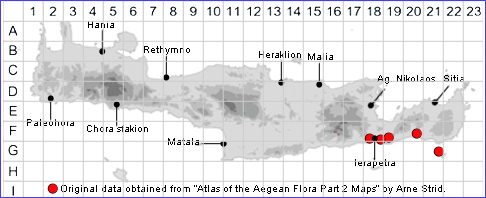SPECIES DESCRIPTION
ERODIUM CRASSIFOLIUM
Family and Genus:- See- GERANIACEAE
Common Names:- None
Homotypic Synonyms:- None
Meaning:- Erodium (Gr) Heron (reference to the shape of fruit, stork's-bill).
Crassifolium (L) With thick fleshy or leathery leaves.
General description:- Perennial; roots with globose tubers up to 1·5 cm.
Stems:-
1) 10-30 cm, ascending to erect, with patent, white hairs.
Leaves:-
1) Up to 6 cm, deeply pinnatisect; lobes incise-dentate or pinnatifid.
2) Petiole, at least as long as the lamina in the basal leaves, very short in the upper
cauline leaves.
Flowers:-
1) Umbels, with 3-5 flowers.
2) Bracts, broadly ovate, pale, scarious, hairy.
3) Pedicels, 10-20 mm, stiffly deflexed in fruit.
4) Sepals, 6-7 mm, with short mucro.
5) Petals, c. 8 mm, pale pink.
Fruit:-
1) Mericarps, c. 5 mm; apical pits small, with a conspicuous furrow at the base.
2) Beak, (50)80-100 mm, not spirally twisted, with numerous long, brown or yellow
hairs on the inner side.
Key features:-
1) Beak, of the fruit more than 40 mm. with long, yellowish hairs on the inner face.
2) Roots, tuberous.
Habitat:- Open grassland, loamy and clayey flats by the sea, field margins. 0-70
m.
Distribution:- N Africa, Crete, Cyprus and the E Mediterranean. On Crete known
from the area east of Ierapetra.
Flowering time:- Mar-May.
Photo by:- Yannis Zacharakis
Status:-
Protection status (for threatened species):Greek Presidential Decree 67/1981.

